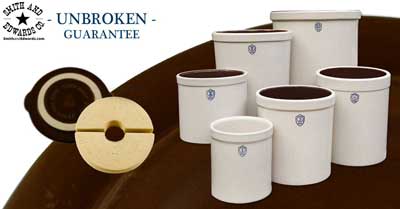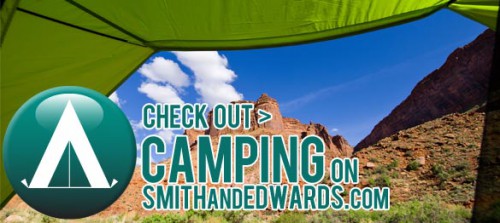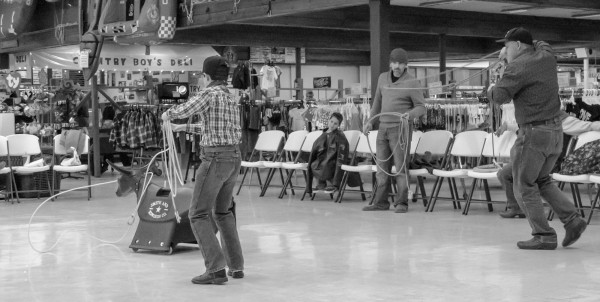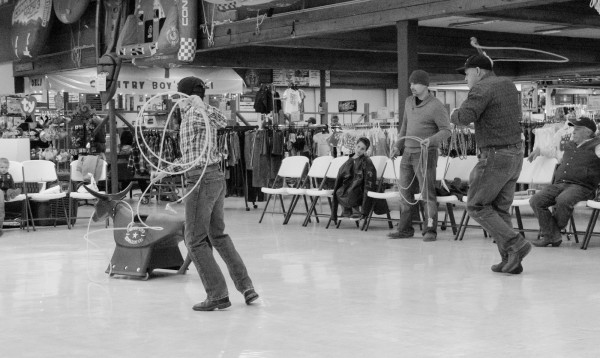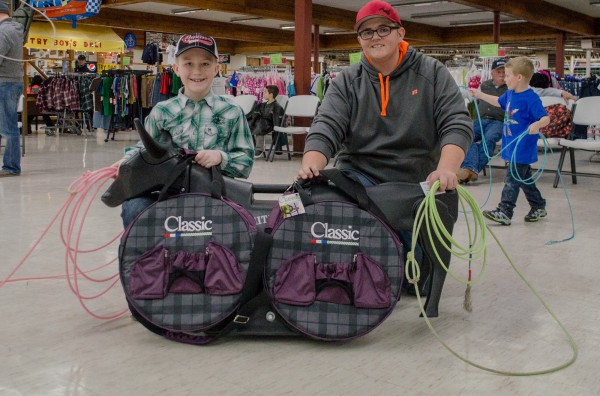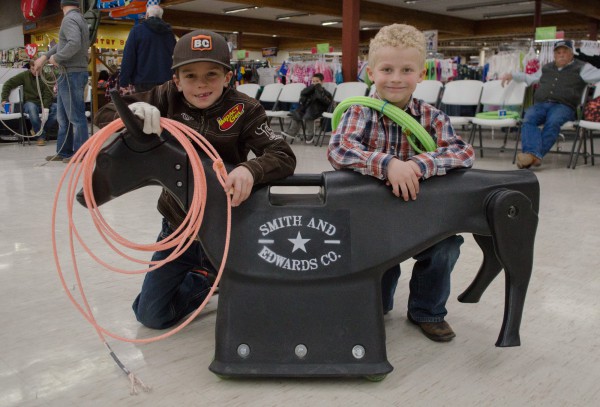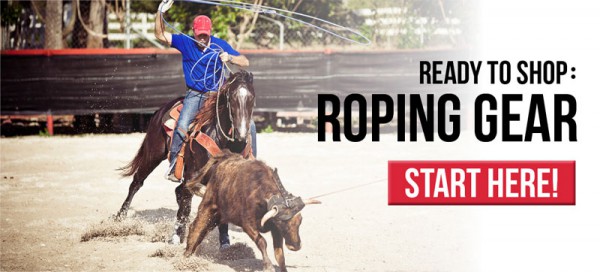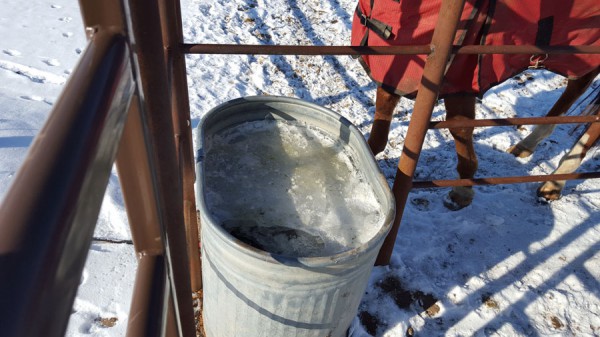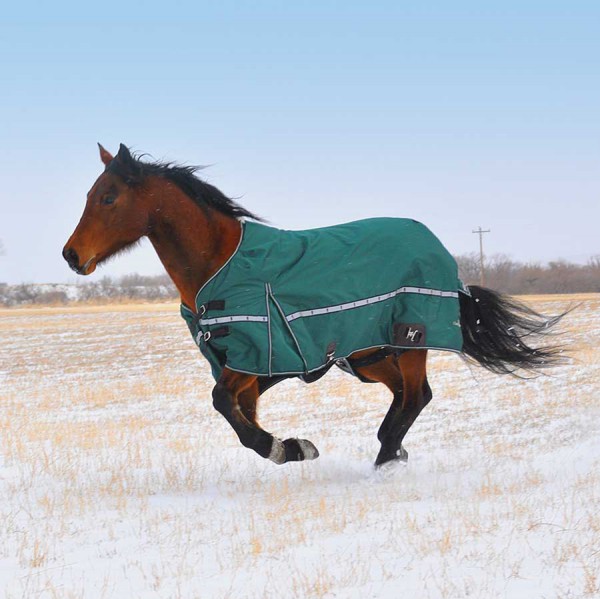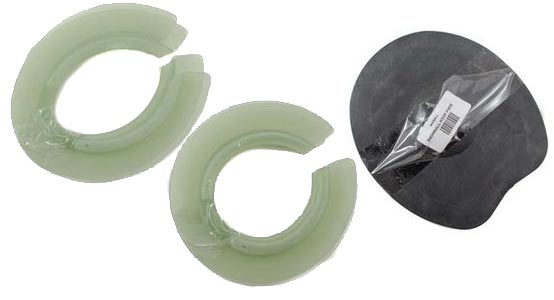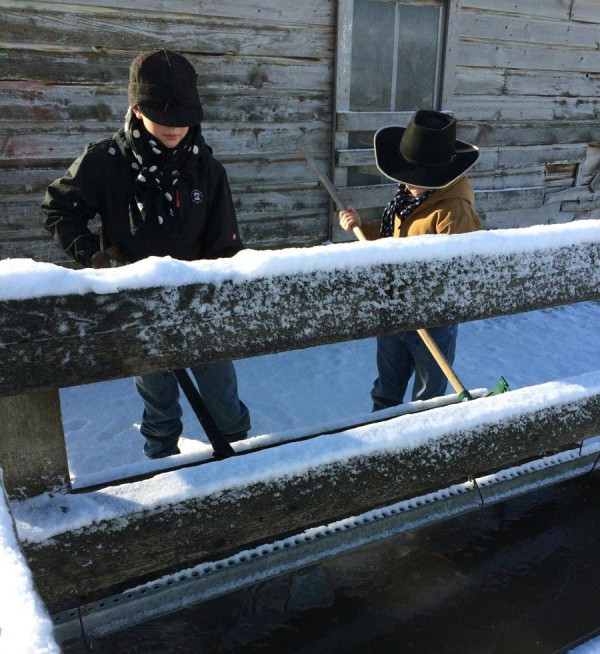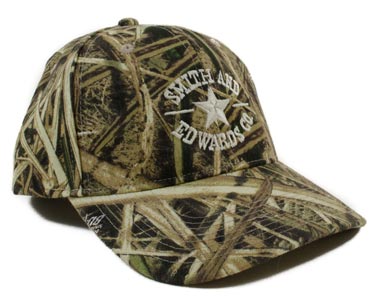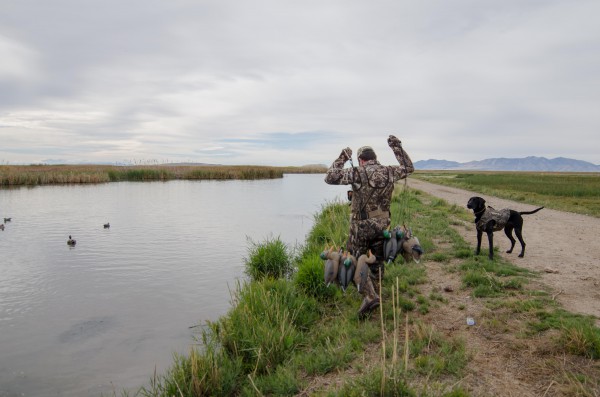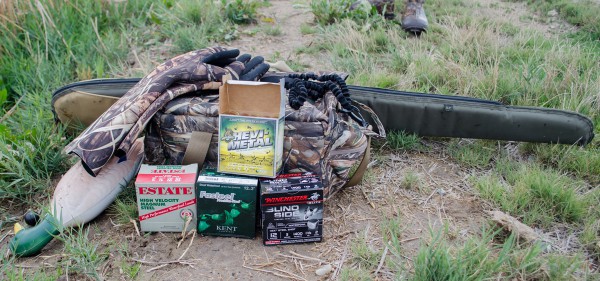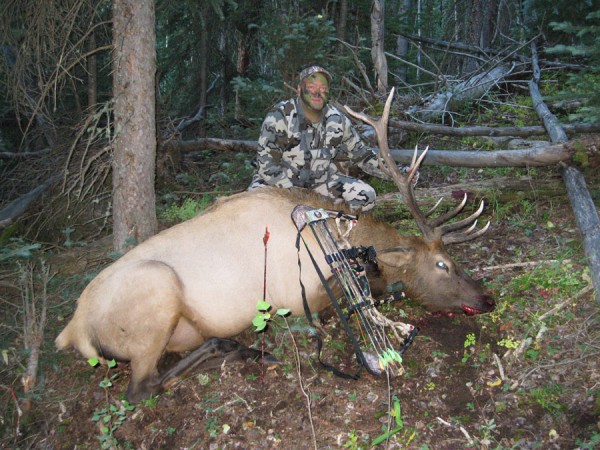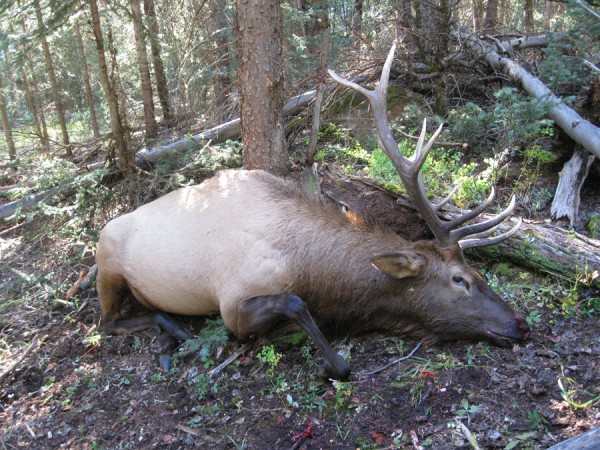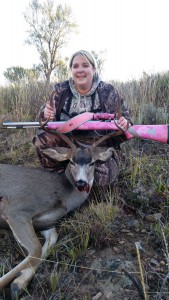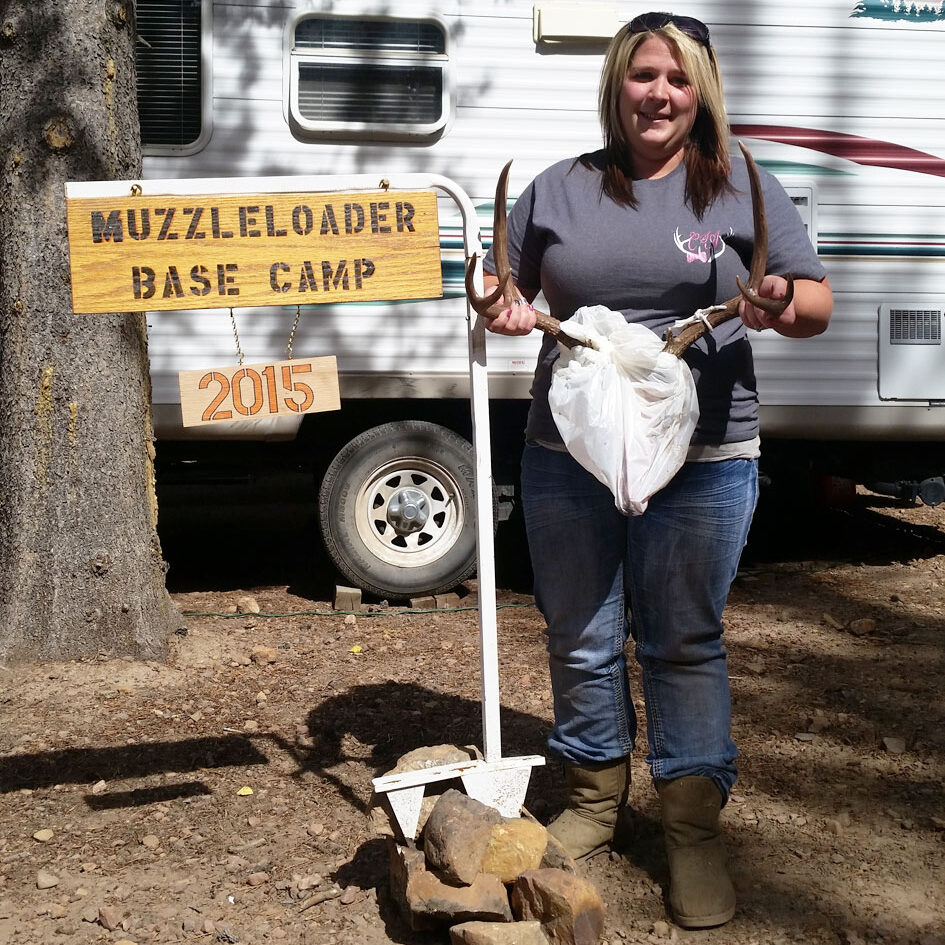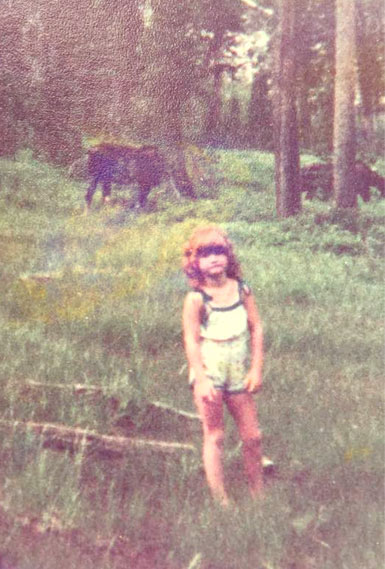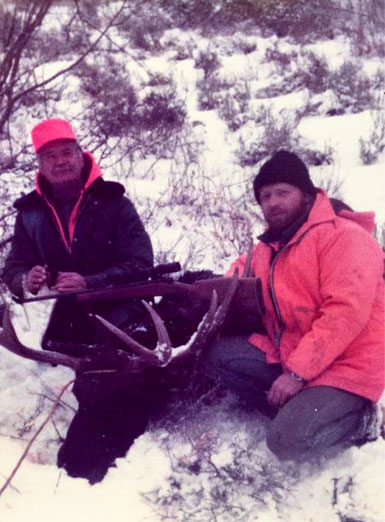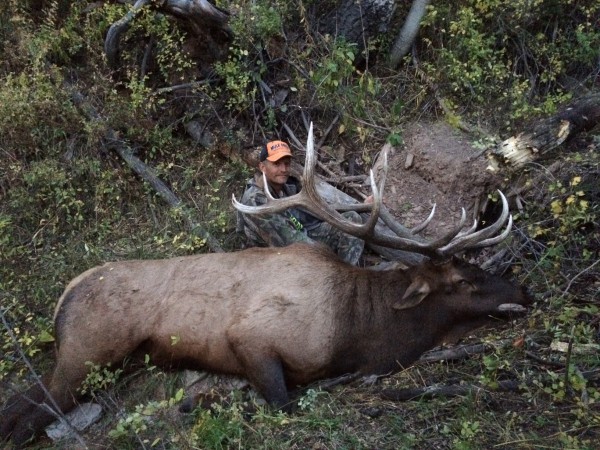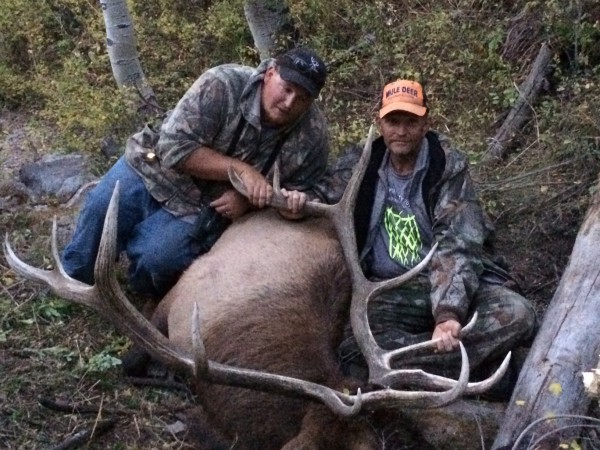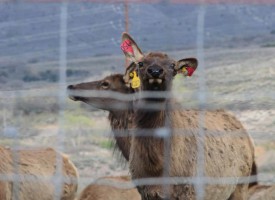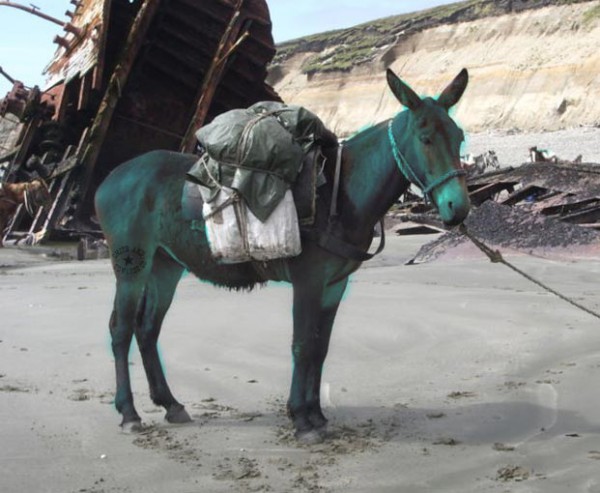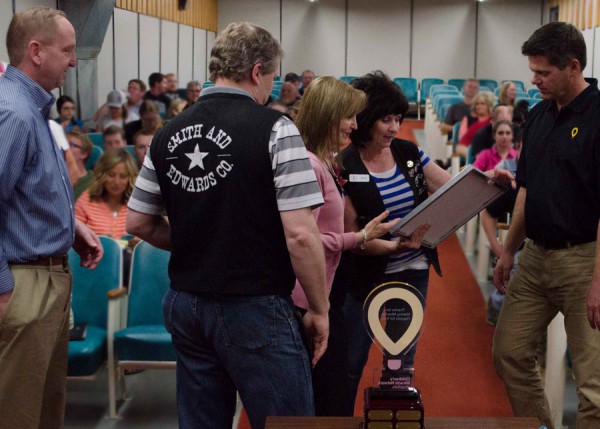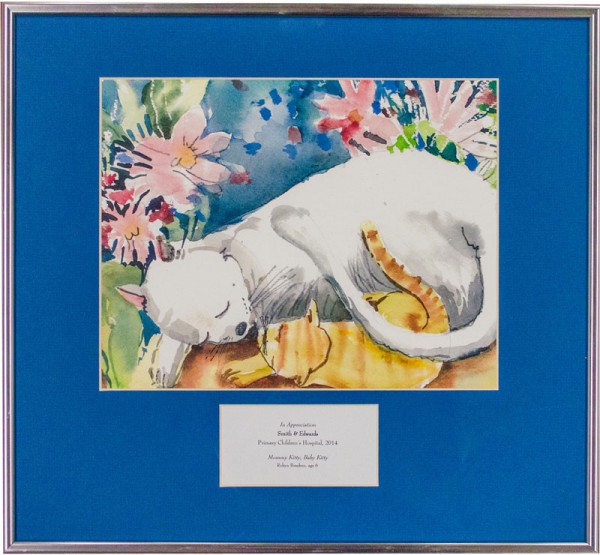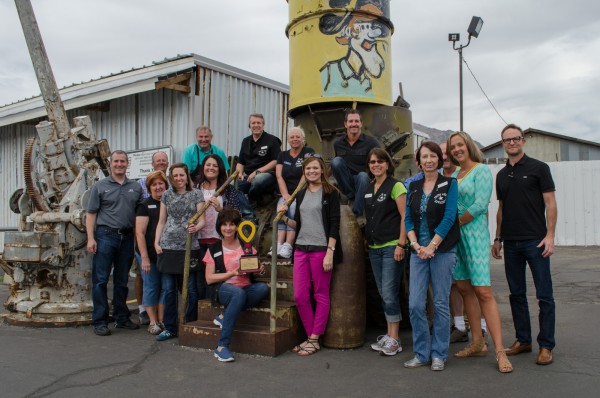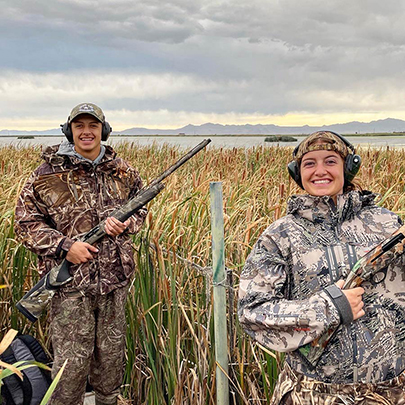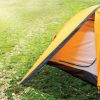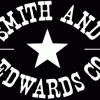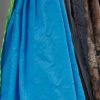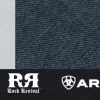
Teresa with USU Extension service helped answer some common fermenting & pickling questions for us!
When people think of pickles, large quart jars of olive-colored pickles come to mind. But there’s another way to make pickles that takes a lot less heat, a lot more time, and some say, yields a lot tastier results:
Fermenting Pickles and Vegetables
When you make pickles in a traditional pickling crock, in some ways it’s much less work: simply prepare your pickles, load them in the crock according to the recipe, and give them a few weeks.
This yields crisp, crunchy, delicious pickles!
And you can make sauerkraut and more fermented dishes the same way.
Our favorite brand of stoneware pickling crocks are the Ohio Stoneware line (click to shop), which is make in the USA in Zanesville, Ohio. And when you order yours from Smith & Edwards, we guarantee they arrive in perfect condition!
We carry lids, weights and pickling crocks in a huge range of sizes, as well as the very-popular 3-gallon fermentation set.
What size Pickling Crock do I need?
The US Department of Agriculture recommends a 1 gallon container for each 5 pounds of fresh vegetables. So a 5-gallon stone crock is an ideal size for fermenting about 25 pounds of fresh cabbage or cucumbers, according to the USDA Complete Guide to Home Canning.
Cucumbers and cabbage must be kept 1-2 inches under brine while fermenting, so weights can be instrumental.
Make sure to wash your crock, weights, and lid with hot soapy water, and rinse them well with very hot water, before adding your vegetables.
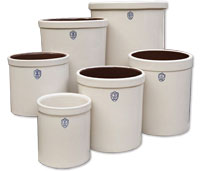
You can get a pickling crock for any size project – from one to five gallons – and the weights & lids to match.
Why & How to use a Pickling Crock
We were lucky to have Teresa Hunsaker from the USU Extension Service here at Smith & Edwards this summer to check pressure canner lids, as well as give tips on the fermenting process. Fermenting is only growing in popularity as people return to the traditional method, as well as gain interest in probiotics and the health benefits of fermented foods for the digestive system.
Read on for common fermenting mistakes, how to process your vegetables after fermenting them, and a fermented Dill Pickle Recipe!
Pickling Crock Common Mistakes
One of the common problems Teresa sees has to do with salt: especially people not using enough salt.
Salt is hugely important with shredded vegetables and pickles: otherwise, the brine goes scummy and your lovely batch of pickles or sauerkraut is lost. It’s so important to use the right salt ratio!
Use your standard pickling salt: you can use both iodized and noniodized table salt. Noncaking materials added to table salts may make your brine cloudy. USDA advises against flake salt because it varies in density. Reduced-sodium salts may be used in quick pickle recipes; this may give your pickles a slightly different taste than expected. But, reduced-sodium salt is not recommended for fermented pickles.
Layer your vegetables, then salt, then vegetables, then salt: this is especially important with cabbage.
Another mistake Teresa sees is not having your crock at the right temperature. Some people will store their pickles in the basement as they ferment, or in a room that gets too hot.
The temperature should be between 68-74 degrees. That’s because if it’s too hot, it will process too fast and produce scummy brine. Too cold, and the process will take too long.
The traditional way to make kimchi is actually to bury the fermentation pot in the ground, to keep the temperature constant!
Fermenting is both an art and a science!
How Long does Fermenting Take?
The length of time needed for your batch of pickles or sauerkraut depends on your recipe. It takes about 3 weeks for sauerkraut, and there’s a good recipe out there for 21-day pickles.
Follow your recipe exactly, including changing out the brine: with the 21-day pickles, you need to change the brine every few days.
OK, they’re done… Now what?
You can can your sauerkraut or pickles after they’re done: just process them. For sweet pickles, it just takes 15 minutes; for whole dills, about 25 minutes does the trick at this altitude.
Or, you can waterbath them – check your local recommendations and keep them under 185°.
But you don’t HAVE to can them at all. Your crock pickles can hold in the fridge for weeks!
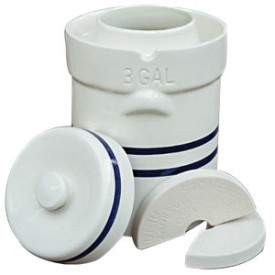
This 3-gallon fermentation crock features a channel for the lid to rest in, and comes with matching weights.
What’s the difference between pickling crocks and fermentation crocks?
Either style works well.
The fermentation style is designed for keeping the vegetables down better, and it features vents. You do want some air circulation to temper the temperature.
Dill Pickles Recipe for Pickling Crocks
Use the following quantities for each gallon capacity of your container.
- 4 lbs of 4-inch pickling cucumbers
- 2 tbsp dill seed or 4 to 5 heads fresh or dry dill weed
- 1/2 cup salt
- 1/4 cup vinegar (5%)
- 8 cups water and one of more of the following ingredients:
- 2 cloves garlic (optional)
- 2 dried red peppers (optional)
- 2 tsp whole mixed pickling spices (optional)
Procedure: Wash cucumbers. Cut 1/16 inch slice off blossom end and discard. Leave 1/4-inch of stem attached. Place half of dill and spices on bottom of a clean, suitable container. Add cucumbers, remaining dill, and spices. Dissolve salt in vinegar and water and pour over cucumbers. Add suitable cover and weight. Store where temperature is between 70° and 75° F for about 3 to 4 weeks while fermenting. Temperatures of 55° to 65° F are acceptable, but the fermentation will take 5 to 6 weeks. Avoid temperatures above 80° F, or pickles will become too soft during fermentation. Fermenting pickles cure slowly. Check the container several times a week and promptly remove surface scum or mold. Caution: If the pickles become soft, slimy, or develop a disagreeable odor, discard them. Fully fermented pickles may be stored in the original container for about 4 to 6 months, provided they are refrigerated and surface scum and molds are removed regularly. Canning fully fermented pickles is a better way to store them. To can them, pour the brine into a pan, heat slowly to a boil, and simmer 5 minutes. Filter brine through paper coffee filters to reduce cloudiness, if desired. Fill hot jar with pickles and hot brine, leaving 1/2 inch headspace. Remove air bubbles and adjust headspace if needed. Wipe rims of jars with a dampened clean paper towel. Adjust lids and process as below, or use the low temperature pasteurization treatment.
– recipe from USDA’s Complete Guide to Home Canning, Guide 6: Fermented Foods and Pickled Vegetables
Want to learn how to make sauerkraut in a fermentation crock? Enter your email address to get access to a free printable Fermented Sauerkraut recipe!
Explore Pickling Crocks…
